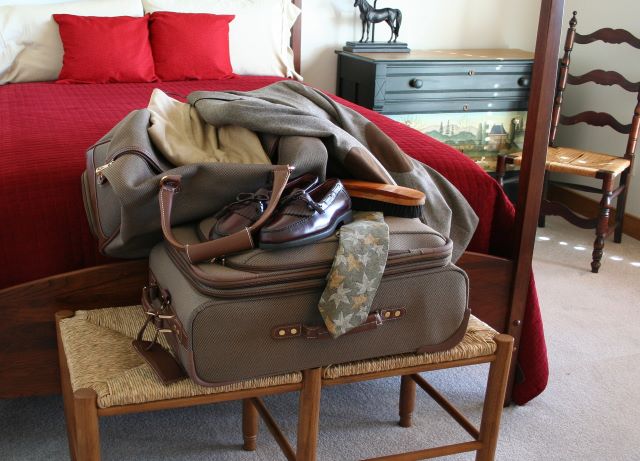After the pandemic, everyone started enjoying even the smallest pleasures in life and travelling or visiting new places is one of those pleasures that we all missed. But travelling means one has to take care of their health, hygiene and comfort. Clothes play a major role in making you feel warm and snuggly. One of the most important factors to consider when buying clothes is the fabric. It’s what will make your clothes feel good against your skin and it’s what will determine how well they hold up over time. Fabrics can be made from all sorts of materials, but some are better than others for traveling. These days everyone is trying to focus on bio-based garments as it’s the need of the hour and also, they are skin-friendly as they save you from getting exposed to any type of allergy which you can’t afford while travelling or vacationing. There are a few fabrics which are soothing and comfortable while you are commuting:
1. YAK WOOL
One of the finest and most unique types of wool fibres found in the world. A fabric consisting of a warp and weft, which are woven in opposite directions. The fabric is usually plain and smooth with no knitted pattern, but may be twill or chevron-patterned. A yarn in which the weft is not interlaced with the warp.
These fibres are soft and delicate, retain warmth better than sheep’s wool, regulate moisture, and are breathable. It has anti-allergic properties which makes it a must-have while you are going to colder places. Yak wool has these properties as it is thick due to the presence of two layers- one is the overcoat and the other is an undercoat. The upper layer or the overcoat is used to make blankets, quilts, etc. The undercoat is used to make woollen clothes such as leggings, sweaters, scarves, gloves, caps, etc. Yak wool is mainly produced in China, Nepal and Mongolia.
2. PINATEX:
Known to be pineapple leather, Pinatex is an organic replacement for leather. It is a unique fabric made from the leftovers of the pineapple plant. That means there is no need for any extra resources for procuring the raw material. The bio-based fabric is a great source of improving farmers’ wealth. It is a sturdy and durable material if proper maintenance is done. Various products from shoes to bags to watches can be made from it. Some brands are also deploying it to make leather jackets instead of using leather made from animal skin. This unusual non-woven fabric is part of H&M’s Conscious Collection. A Pinatex band adds sustainable style to the padded bag with its jacquard pattern which offers comfort with a serious attitude.
3. BEECHWOOD MODAL FABRIC:
It is a rayon, a cellulose fibre made by spinning reconstituted cellulose, in this case often from beech trees. This fabric is 96% modal and 4% lycra. This fabric was produced by an Austrian company Lenzing AG. But now countries like the Czech Republic, Slovakia, and Germany are making their versions using beach trees. The uniqueness of the fabric is that it doesn’t need any artificial resources for irrigation. A company named Bleusalt has launched a super travel-friendly line of shirts, pants, dresses, wraps and scarves made from Beechwood fabric. The soft and smooth fabric is luxurious and highly durable.
4. CUPRO:
The fabric fibres are regenerated from the cotton waste’s cellulose. The fibres are made from very small, silky cotton fibres, called linters, that stick out of cotton seeds, but are not strong enough to spin. The cuprammonium solution, which is a combination of copper and ammonium, is poured into caustic soda to dissolve this linter and finalspinsing into the fibre. It is also a plant-based fabric but semi-synthetic in nature. The resultant Cupra rayon fabric is velvety soft and comes with a shine just like silk. You can use cuprammonium rayon to make blouses, tank tops, t-shirts, sports bras, and other lightweight clothing by combining it with other types of fabric. A little care has to be taken while washing and drying as this type of rayon go out of shape when hung on a dryer. But yes it is a wrinkle-free fabric which can be your travel buddy.
5. HEMP:
Last on this list is Hemp. It is a sustainable textile made of fibres of a very high-yielding crop in the cannabis Sativa plant family. Natural fibres such as hemp are known for their versatility and durability. Earlier it was used for industrial purposes like manufacturing ropes and sails. Textiles made from hemp have a coarse texture. Hemp clothing even possesses tensile strength three times greater than cotton clothing. A hemp-hybrid material is created easily by blending hemp fibres with other fibres, retaining the strength of hemp fibres while enhancing comfort by using softer, finer fabrics. Hybrid hemp is a bio-based fabric which grows very fast, requires minimum water and can be harvested three times a year. The only disadvantage attached to this fibre is that it is a little expensive because it has to be compounded. Another great option for travelling is it’s low-maintenance. After looking at all the pros and cons, make your travel bag more sustainable and less harming the surroundings. Every conscious step will make a difference. Follow your passion for travelling but with each step towards a pollution-free environment.





